Practicing Harp Happiness
#036: Sight Reading Should Be Easy: 4 Simple Strategies

Does sight reading scare you? Do you wish you could instantly play any new piece you want to learn, even just enough to get the idea of how it sounds?
Being able to read music fluently and learn it quickly is a “someday” skill for many harpists. Fortunately, you can improve your sight reading with a few essential skills that you are probably already practicing. The dramatic and nearly instant results will amaze you!
Links to things I think you might be interested in that were mentioned in the podcast episode:
- Getaway Retreat
- 4 Easy Ideas to Take Your Music Reading from Fumbling to Fluent blog post
- Harpmastery.com
Get involved in the show! Send your questions for future podcast episodes to me at [email protected]
#034: Tweaking Your Technique: 3 Ways to Level Up

Is your technique your biggest harp issue?
Perhaps you know your technique is holding you back. Maybe you know you need to find the next level but aren’t sure how to get there.
Today Anne reveals three ways to level up your technique and free your fingers to do your bidding. The good news? You might be doing the right things already. The better news? A faster, more accurate and secure technique is just a few simple tweaks away.
Links to things I think you might be interested in that were mentioned in the podcast episode:
Get involved in the show! Send your questions for future podcast episodes to me at [email protected]
#028: Expression from the Ground Up: Form and Flow
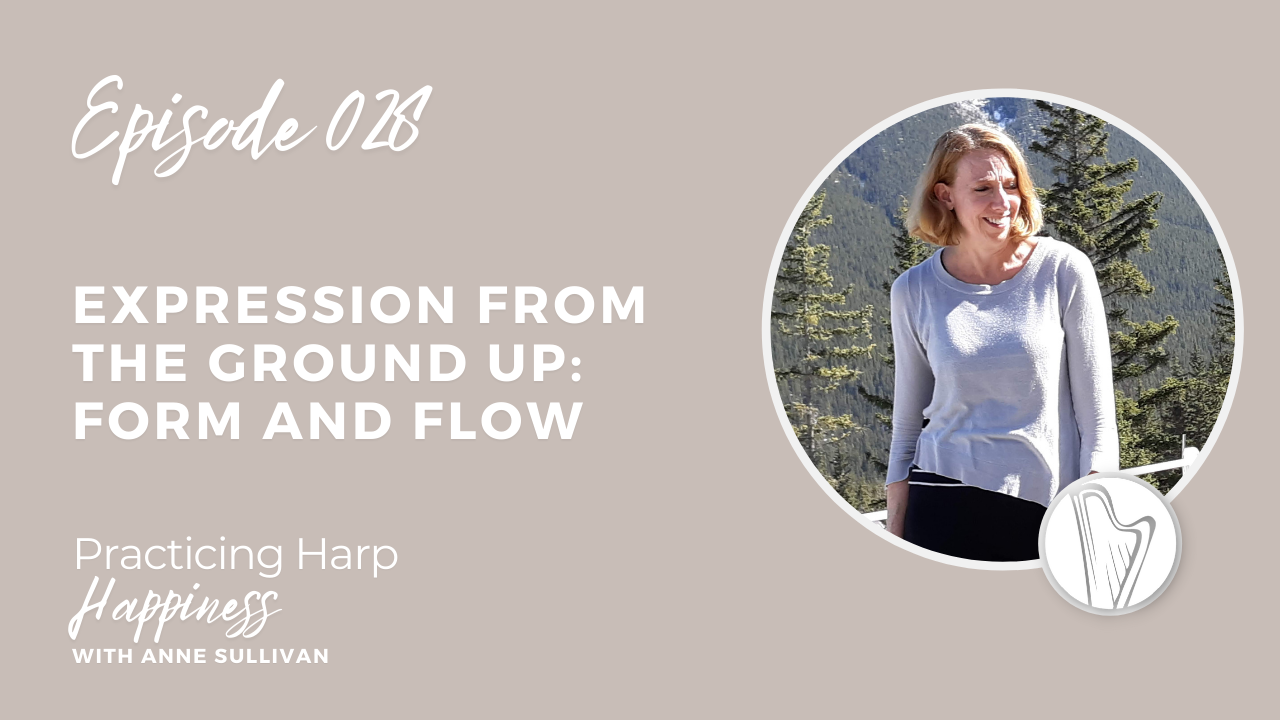
The most powerful musical expression isn’t created by magic. It’s written into each note. It’s up to the performer to discover it and bring it to life.
If you’ve ever questioned your expressive choices or felt uncomfortable making those choices, today’s show reveals how to discover the composer’s intention and interpret it with creativity and confidence. Plus I’ll show you where to look - and listen - for the hidden expressive clues in any piece.
Links to things I think you might be interested in that were mentioned in the podcast episode:
- Join My Harp Mastery
- Blog post on Your 5 Day Plan to Better Musical Awareness
- Beyond Dynamics: 3 Keys to More Musical Harp Playing podcast
- Harpmastery.com
Get involved in the show! Send your questions for future podcast episodes to me at [email protected]
#024: Glorious Glissandi: Your Essential Practice Guide
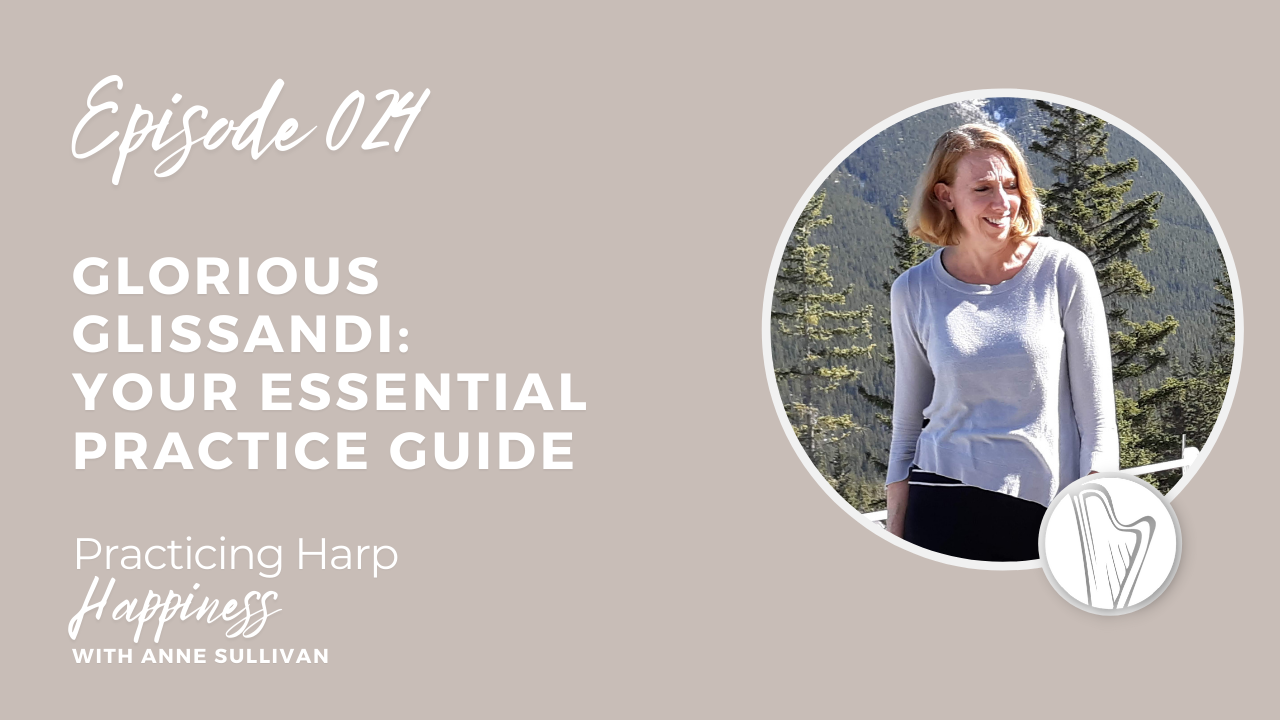
Without question, the glissando is the signature harp sound. It’s likely the very first thing you ever tried when you first touched a harp.
It’s equally likely that at this point in your harp journey you have questions about how to make them sound glorious. On today’s show I will share the expressive secrets to a sweeping glissando plus the technical specifics. Whether your favorite term is glissando, sdrucciolando or flux, you can make it magical.
Links to things I think you might be interested in that were mentioned in the podcast episode:
- Waltz of the Flowers Cadenza Challenge
- Develop Your Glissando Color Palette blog post
- Harpmastery.com
Get involved in the show! Send your questions for future podcast episodes to me at [email protected]
#021: Music For The Ears: Are We Too Visual?
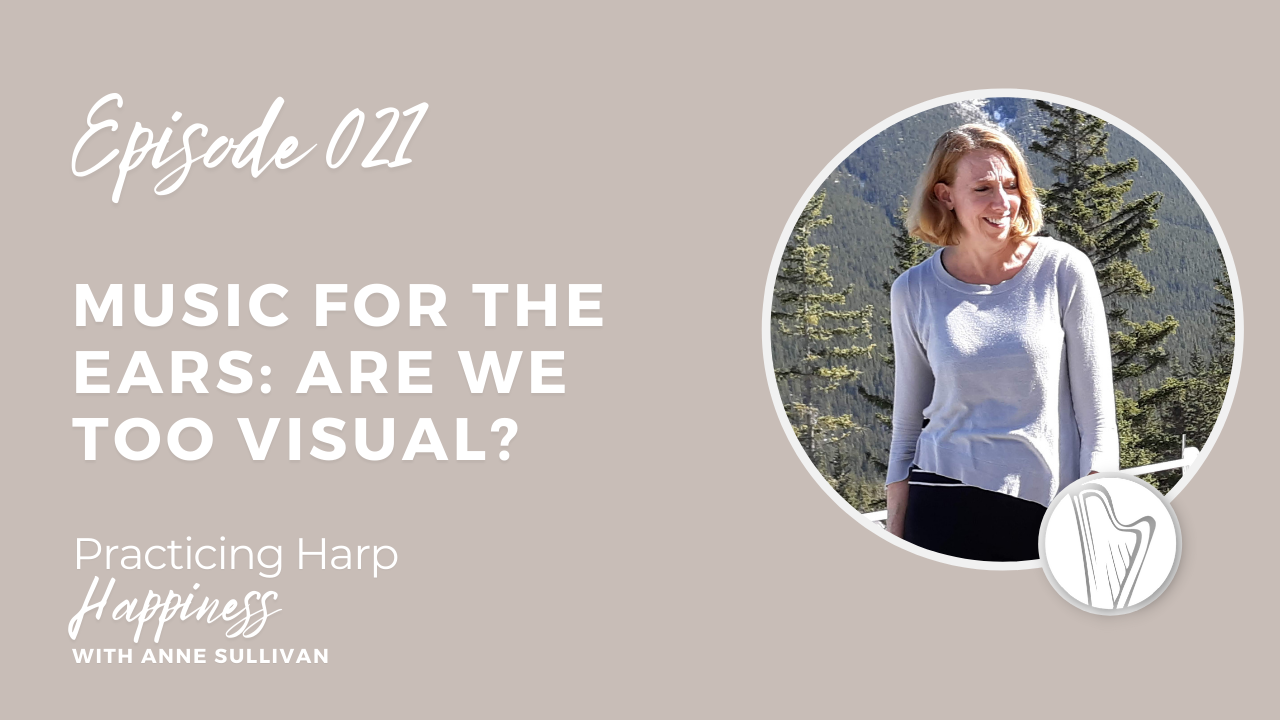
I used to listen. For instance, when I first started playing the harp there were no electronic tuners; I had to learn to tune by ear.
I am convinced we harpists have lost some essential listening skills. What role does listening play in your daily practice? I believe listening is too often the last resort. On today’s show I suggest some practical strategies for making focused listening and informed musicianship part of your harp playing every day.
Links to things I think you might be interested in that were mentioned in the podcast episode:
Get involved in the show! Send your questions for future podcast episodes to me at [email protected]
#020: Finger Agility For The Accident Prone: Your Guide To More Facile Fingers
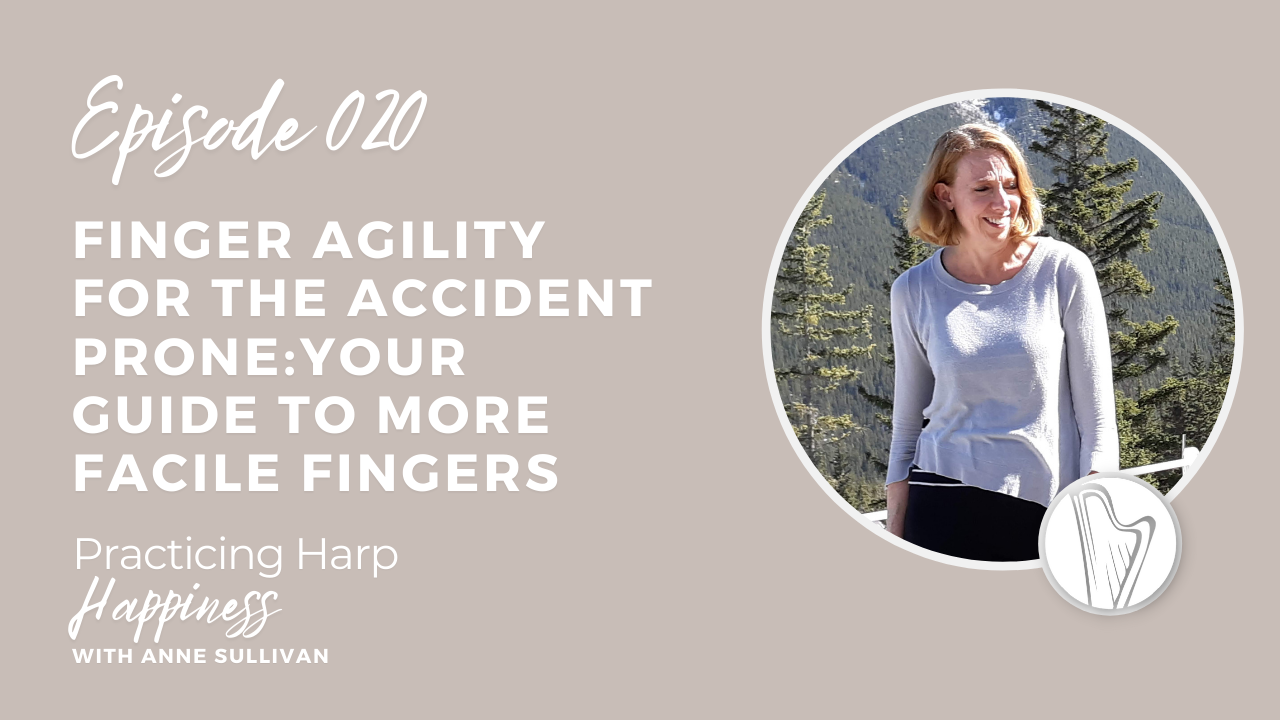
Do you think you’re too old or too uncoordinated to have agile fingers? Think again.
Agile fingers aren’t just for the young or the gifted and they don’t happen by magic. Developing finger facility is key to faster learning and more stumble-free playing. Listen and discover the three things you need to stop doing and the three you need to start doing now to teach your fingers to play with more speed and security at any age.
Links to things I think you might be interested in that were mentioned in the podcast episode:
- Two Step Chord Theory for Harpists webinar
- The Failsafe Fix For Fast Flexible Fingers blog post
- Harpmastery.com
Get involved in the show! Send your questions for future podcast episodes to me at [email protected]
#017: Choose Goals You Can Meet [Goal Setting For Harpists 2]

The first step in achieving a harp goal is believing you can achieve it.
On today’s show I interview Houston harpist and Harp Mastery® Certified Coach Caitlin Mehrtens. Caitlin is expert at helping her students succeed and she shares her advice on how to choose the right goals for you, as well as the two most powerful factors for success. You’ll also learn when to take a step back and refocus so you can move forward. This is a must-listen episode!
Links to things I think you might be interested in that were mentioned in the podcast episode:
- Caitlin Mehrtens’ website
- Loop 38
- Square One, beginner course
- Progress Planner Download
- Are You Living Your Harp Dream or Just Thinking You Are? blog post
- Harpmastery.com
#016: The Four Levels of Goals [Goal Setting For Harpists 1]
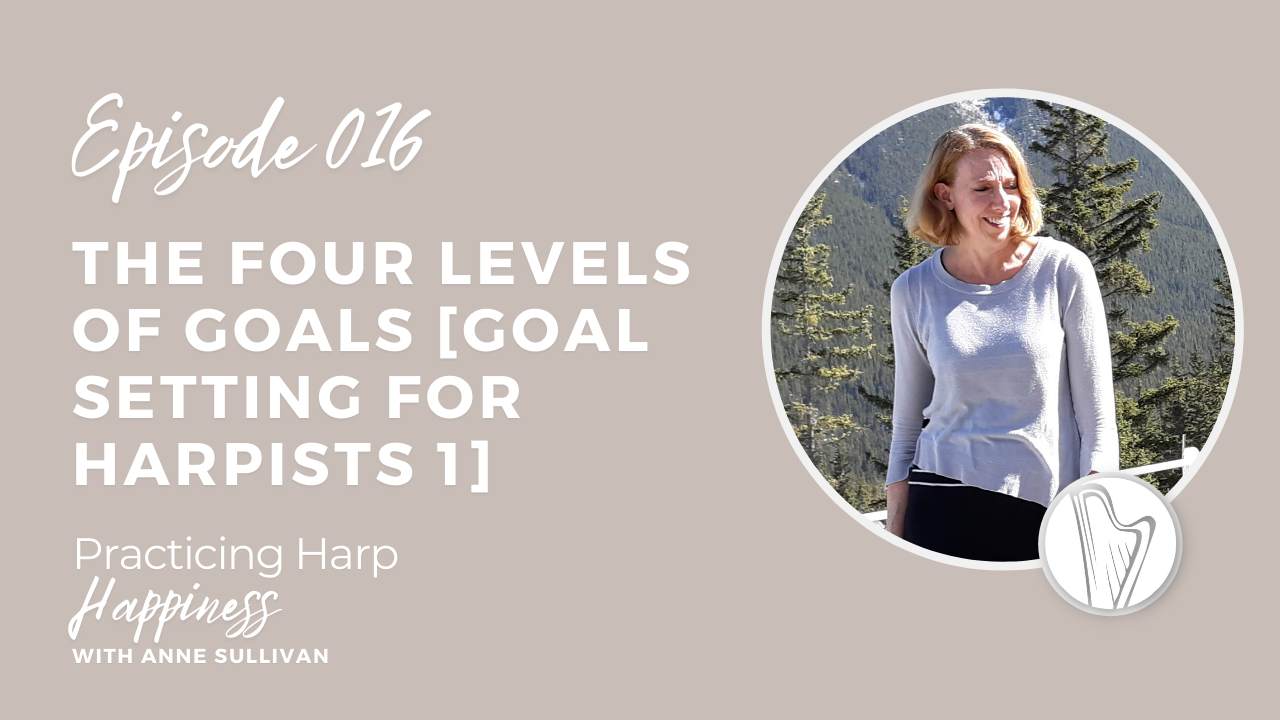
Do you resist setting goals for your harp playing?
Maybe setting goals feels like it will stifle your creativity or take the fun out of your harp playing. Maybe you think goals are only for “serious” harpists.
Today’s show reveals why goals are crucial for every harpist who wants to improve. You’ll learn the 3 types of goals, the 4 levels of goal setting and I’ll give you my exclusive Progress Planner so you can map out each step toward your goal.
Links to things I think you might be interested in that were mentioned in the podcast episode:
#014: Taming The Terrible Thumb [3 Secrets to a Musical Thumb]

Is your thumb timid or a tyrant?
We harpists rely on our thumbs - just try playing a scale without them. They are our longest fingers and undoubtedly our strongest. They double our reach on the harp strings. But how musical are your thumbs?
In this episode, I will show you how your thumbs can be expressive with a supple, fluid sound that can make a melody sing or blend in beautifully with your other fingers, and how to fix common thumb problems.
Links to things I think you might be interested in that were mentioned in the podcast episode:
#013: Master Your Metronome [Do's and Don'ts for Metronome Haters]

Which would you choose: practicing with the metronome or sitting through your kid's favorite cartoon AGAIN?
If the metronome feels like torture, this show will save you from going click crazy. The metronome isn't just for playing fast; it's for creating time to be correct and musical too. You'll learn the proper (and nearly painless) ways to use the metronome - not as a paperweight- and save tons of practice time too! You can play along with me too!
Links to things I think you might be interested in that were mentioned in the podcast episode:
- Related blog post from the archives: Your Metronome Speaks
- Back To School Night virtual event
- Harpmastery.com

